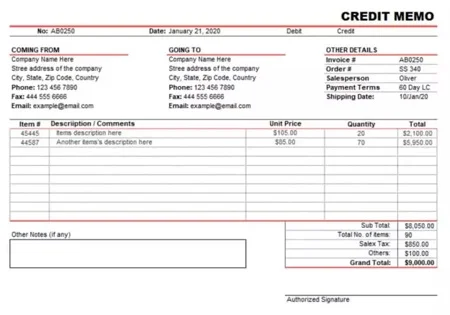Content
Make sure your receipts and records match the balance of your petty cash fund. Start with one of the above categories and work your way to the others. Divvying up the records when reconciling your bank statement can help you stay https://www.bookstime.com/articles/month-end-close-process organized and catch errors at month-end. Compare your invoices with your records to make sure you aren’t missing any customer payments. Make sure you sent an invoice to every customer you completed work for during the month.
Keep in mind, each business’s month-end accounting procedures can vary depending on the type of business, accounts, and accounting method. To avoid mistakes, review your financial information before the month-end close. Ask someone who didn’t prepare the accounts to review them so they’ll find errors or problems you didn’t notice. Your accounts payable only captures short-term payables to creditors. Reconciling accrued expenses will help you stay on top of all invoice payments and dues within a year.
AP & FINANCE
If you want to make sure your inventory is correct, you need to perform monthly inventory counts. Counting your inventory monthly allows you to accurately record inventory levels in your books at month-end. Plus, doing a monthly inventory count can help you decide what items you need to replenish and how frequently. To keep your accounting books as accurate as possible, you need to stay organized. Use the tips below to ensure your month-end close process runs smoothly. Read on to learn tips for creating your month-end close checklist and closing monthly accounts.
- To keep on top of your monthly accounting responsibilities and cut down on time spent closing your books, create a monthly financial calendar.
- A checklist will help you keep track of essential information and minimize time-consuming errors and redundancies.
- Start by double-checking your invoice payments to ensure you make payments on time and avoid duplicate invoices.
- According to data from the American Productivity & Quality Center, the median account close process for 2,300 surveyed organisations was 6.4 days, back in 2018.
- With the right procedures, documentation, and tools, your monthly close can go from stressful and chaotic to simple and consistent.
Create a deadline to complete your closing procedures, depending on your business and your team’s workload. For example, you can use accounting software and scan your receipts in real-time to make your month-end a breeze. Get help from others in your business to address any issues right away, or hire someone who can help.
How to speed up the month-end close process
Even though you must not sacrifice quality for speed, you must also plan ahead to meet your month-end financial reporting deadlines. If you are required to complete the closing process within a week, and you know that the timeline is unrealistic, then communicate it beforehand. Refocus your teams on analysis by replacing repetitive, spreadsheet-heavy work with leading-practice automation. Centralize data and close activities, automate journal entries and reconciliations, strengthen controls, and enhance visibility. That requires cultivating a broader range of relationship skills today, such as how to work in a team and how to engage with other departments.
- During this period, you must balance the account and check if all transactions have been recorded in the right amounts.
- Journal entries of recurring monthly transactions must be performed at the time of the month-end close.
- The month-end closing process is critical to any business but can be very time-consuming.
- This is done so that your balance sheet can be “zeroed out” and your organization can start fresh the next month.
- And just like that, another month end close process is on the books (no pun intended).
Electronic accounting systems and other business tools make this easy. They also protect your business from fraud thanks to security protocols such as three-way matching. Similarly, a monthly inventory count will ensure your products are accounted for.
What Is the Month-End Close Process?
You also need to record all expenses for the month, including all purchases and bills. Like with accounts payable, all transactions must be verified using the relevant documents – like expense reports and card statements. Once verified, each transaction should be recorded as a separate journal entry. Exactly how the month-end close process is carried out depends on the company, of course, but some steps are common to all.
What are the 4 closing entries?
There are four closing entries; closing revenues to income summary, closing expenses to income summary, closing income summary to retained earnings, and close dividends to retained earnings.
That way, you can delegate your accounting procedures and appoint responsible parties instead of doing it all by yourself. Staying on top of your numbers and closing your books every month is important to keep your business on the right track. By preparing ahead for the month-end, you’ll avoid the last-minute rush and have a smooth closing process. With cash basis accounting, you won’t have balance sheet accounts, such as accounts receivables and accounts payables. To learn more, see our guide on Cash Basis Accounting vs. Accrual Accounting. With a month-end closing checklist and a bookkeeping habit, you can scale the summit with ease and manage your finances well.
What is the month-end close process?
Going through the process of closing each month’s accounts provides more visibility into what has happened in the past month. This is useful for future forecasting or budgeting purposes, as well as helping to identify performance trends that may go unnoticed without such a comprehensive review. There are only three phases in a month-end closing process – before, during, and after. Doing this correctly will help you streamline the financial processes of your business effectively.
The process of month end accounting close is indeed complicated because it involves various types of information and data that must be consolidated, verified and reconciled. Thus, an accountant must not only manage the day-to-day and end-of-year accounting activities, but also perform the month end close process. Naturally, accountants are overworked throughout the year, and accountancy has become a job that is never at rest. You organize, reconcile and report the financial activities of your company for that month. The month-end close process is a complicated procedure wherein you need to gather, analyze, reconcile, and adjust data from various systems.
What to Include in a Month End Close Process Flowchart?
Having to create multiple spreadsheets to cover labor-intensive data cleansing slows down the process and increases administrative expenses. Identifying task dependencies will inevitably be an additional step for larger organizations. The month end closing ends when the previous month has been set in stone and no new transactions are recorded on https://www.bookstime.com/ it. Organizing the statements is just as important so that you aren’t scrambling to find them in the last few days of the month. Most forms of accounting software have features built-in for this purpose. Reconcile your cash accounts first, which are easier to process since discrepancies and mistakes are apparent when you’re dealing with cash.

Common prepaid expenses include insurance premiums, payroll, and equipment leases. These expenses will be amortized, meaning the total amount you pay in advance will be distributed equally throughout the accounting period in which you receive the benefits. This reduces not only the manual work your team has to go through, but also errors, bottlenecks, and delays in the financial close. At month end, accountants face strict deadlines, made worse by having to perform repetitive, manual tasks to account for all transactions.
So an accrual entry of $200,000 is added to record earned revenue, offset by a corresponding entry to the Accounts Receivable account. When the customer pays their bill next month, the cash entry of $200,000 generates a corresponding drop in Accounts Receivable. Accruals are adjusting entries made to ensure that all transactions that take place within a given period (e.g., a month) are recorded properly. Reconciling accounts payable and accounts receivable in this way is also known as the accruals process, as dictated by accrual-based accounting principles. Remember, your specific procedures may vary based on your industry, accounting methods, available technology, etc. If you’re using a cloud-based, automated solution such as Planergy, many of these data sources will already be connected, organized, and ready for real-time access, manipulation, and analysis as needed.
French Open LIVE: Tennis scores and results from Roland Garros as … – Yahoo Sports
French Open LIVE: Tennis scores and results from Roland Garros as ….
Posted: Sat, 03 Jun 2023 22:31:54 GMT [source]
During your monthly close, cross-check your records to make sure you paid all bills and invoices. If you’re a small business owner who feels the month end close process is a mountain of tedious admin, you’re not alone. The monthly financial close is an important but time-consuming process that entrepreneurs don’t look forward to. If your company uses a petty cash fund, that spend will likely become invisible unless you have systems in place to track it. Manual accounting involves tracking receipts and cross-checking them with withdrawals from petty cash.

